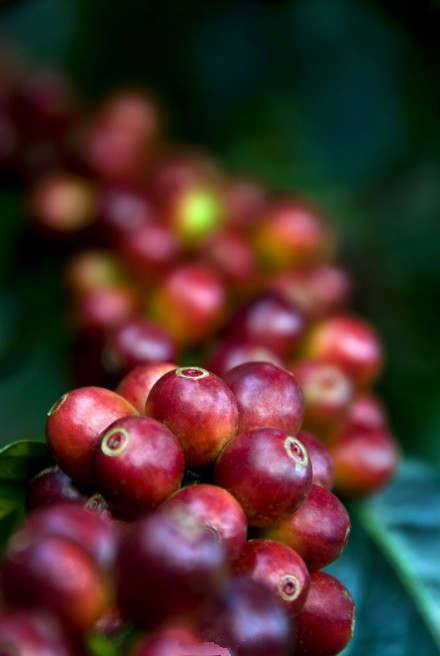The unique geographical environment of Colombian coffee
Costa Rican coffee production has been in a tug of war with Vietnam in recent years, but two ○○ three to two ⊙⊙ was squeezed out by Vietnam in seven years, ranking the third largest producer in the world. Costa Rica is determined to regain its position as the second place, and the second ○○ has worked out a plan to increase production in six years, and is determined to increase its annual output from more than 12 million bags to more than 16 million bags within five years, and win back the world runner-up.

In the past, Costa Rica paid more attention to the bulk commercial bean market, and did not enter the niche boutique market until a year later, obviously much later than Brazil and Guatemala. On this point, FNC staff said that ten years ago, they were not optimistic about the boutique market, and it was only after the millennium that they began to mend.
In fact, Colombia has rich landforms, low latitudes and high elevations, and has excellent conditions for the growth of boutique coffee; except for the low altitude of Bucaramanga, coffee is mostly planted at 1200-1900 meters. Brazil relied on high technology to overcome the adverse soil and water environment of coffee, and later came out of the sky. Colombia has good mountains and good water, its natural environment is superior to Brazil, and it has a more explosive power to develop boutique coffee, which should not be underestimated.
The Costa Rican coffee area, located between three and eight degrees north latitude, is a low-latitude coffee belt. It can be harvested twice a year, and mature coffee can be harvested almost every month from south to north. Large-scale entrepreneurial coffee farms are distributed in the central and northern parts of the country, and are the main producing areas of commercial beans, including the historic Medes, Armenia and Manisales, commonly known as' MAM''. The crystal fruit here has a strong sour taste and is a typical Central American flavor.
But Bucaraman in the northeastern province of smtander is known for its low sour and bitter flavor, similar to Indonesia's Mantenin flavor, probably related to an altitude of only 960m (low altitude and low acidity). Bucamanga's beans are interesting, unlike the familiar Colombian flavor. Although they are soft beans, they are full-bodied, and they don't taste like MAM' beans with dead acid and no depth.
Important Notice :
前街咖啡 FrontStreet Coffee has moved to new addredd:
FrontStreet Coffee Address: 315,Donghua East Road,GuangZhou
Tel:020 38364473
- Prev

General knowledge of the origin and quality of Mexican coffee
Due to geographical and climatic reasons, the coffee growing area of Mexico is close to Guatemala, and the production classification belongs to the Central American type. The main producing areas are: Kolabegu, Australia Aluca states, the products are mostly washed beans produced in the highlands, with a good aromatic and sour taste, the grade is divided into three categories according to altitude: Aldura (219m-1280 m), Prima. Rabe Society (853-1006
- Next

Colombian coffee beans are more important than anything else.
Costa Rica's boutique bean producing areas are mainly in the south, with an elevation of more than 1500 meters, including St. Augustus in Uila Province.
Related
- Detailed explanation of Jadeite planting Land in Panamanian Jadeite Manor introduction to the grading system of Jadeite competitive bidding, Red bid, Green bid and Rose Summer
- Story of Coffee planting in Brenka region of Costa Rica Stonehenge Manor anaerobic heavy honey treatment of flavor mouth
- What's on the barrel of Blue Mountain Coffee beans?
- Can American coffee also pull flowers? How to use hot American style to pull out a good-looking pattern?
- Can you make a cold extract with coffee beans? What is the right proportion for cold-extracted coffee formula?
- Indonesian PWN Gold Mandrine Coffee Origin Features Flavor How to Chong? Mandolin coffee is American.
- A brief introduction to the flavor characteristics of Brazilian yellow bourbon coffee beans
- What is the effect of different water quality on the flavor of cold-extracted coffee? What kind of water is best for brewing coffee?
- Why do you think of Rose Summer whenever you mention Panamanian coffee?
- Introduction to the characteristics of authentic blue mountain coffee bean producing areas? What is the CIB Coffee Authority in Jamaica?

